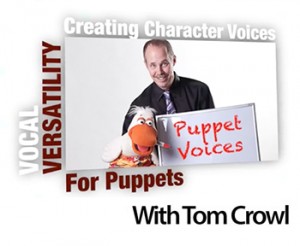The first of a six part interview with ventriloquist and figure builder Mike Palma of Florida.
In this clip, Mike mentions Paul Winchell’s Book: Ventriloquism For Fun And Profit. It is also available on Kindle
for eReaders!
Video Transcript:
So, who’s the guy behind you there?
Oh, that’s a little Lovik figure I picked up. I got it from Sean Petrello. It originally had some carved or sculpted hair on top. I knocked that off, put on a wig, repainted it, and did a little touch-up paint job. Then I put it up for sale.
He looks great.
Yeah, he turned out really good. That’s one thing I’m really working on — trying to improve not only building figures, but also the paint jobs. I think that’s what really sets apart the professional vent figures from some of the ones that don’t look quite as polished.
Well, for the people who don’t know who you are, why don’t you introduce yourself?
All right. My name is Mike Palma. I’m a ventriloquist and a magician, and along with that I’m also a figure maker. I’ve been doing magic and ventriloquism since I was a kid. I’ve got pictures of me at about four years old. Of course, I wasn’t any good back then, but you get bit by the bug. You get the bug for ventriloquism, you get the bug for magic, and the two really go hand in hand.
When I do my shows, I perform mostly for retirement communities here in Florida. I do both magic and vent. It makes the shows a little different, and the audiences really enjoy the ventriloquism part especially.
So what got you interested in ventriloquism?
My father. I grew up in the early ’70s, and at that time there weren’t a whole lot of ventriloquists on TV. My father always talked about Paul Winchell and Jimmy Nelson. In the ’70s, the only people I really got to see on television — and it was a big treat when they were on — were Jay Johnson, Willie Tyler and Lester. Occasionally I’d catch a commercial with Jimmy Nelson and Danny O’Day, but those were few and far between.
Then, in 1980, my father came home with a video. We lived out in the middle of nowhere, and he worked for a TV production company. He brought home a tape called Dummies. On it, I saw Sammy King and a bunch of the great ventriloquists of that time. That really lit a fire under me. I said, “Man, this is what I want to do.”
Very cool. So how did you learn?
Books. As a matter of fact, my father had saved, since his childhood, the old Paul Winchell book Ventriloquism for Fun and Profit. I read that book cover to cover several times and practiced. There were no videos at the time, no other ventriloquists in the area, so you just kind of taught yourself.
You start thinking, “Well, you’ve got to talk without moving your lips, come up with a different voice, and build a different character.” That’s how it started — pretty much self-taught.
Later on, as I got older, Christmas gifts started coming in. One year I got the Maher Ventriloquist Course as a present, and that really helped me take off.
Next Article: An Interview With Ventriloquist Mike Palma – Part 2
Previous Article: An Interview With Ventriloquist Lisa Laird – Part 6







